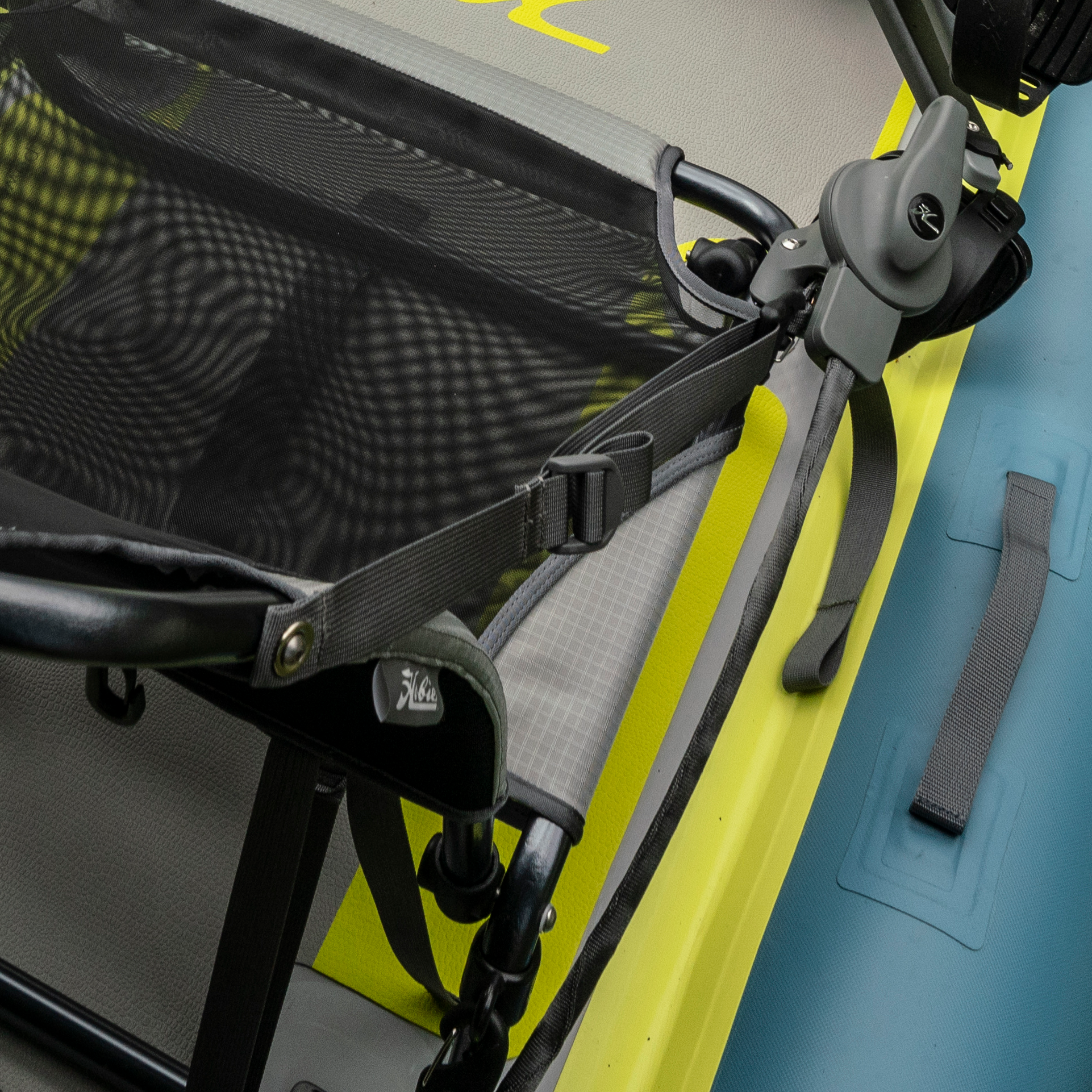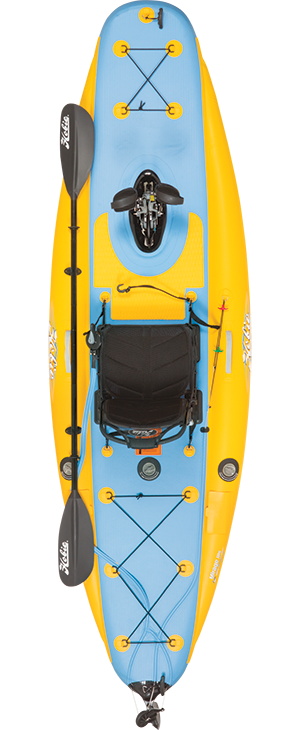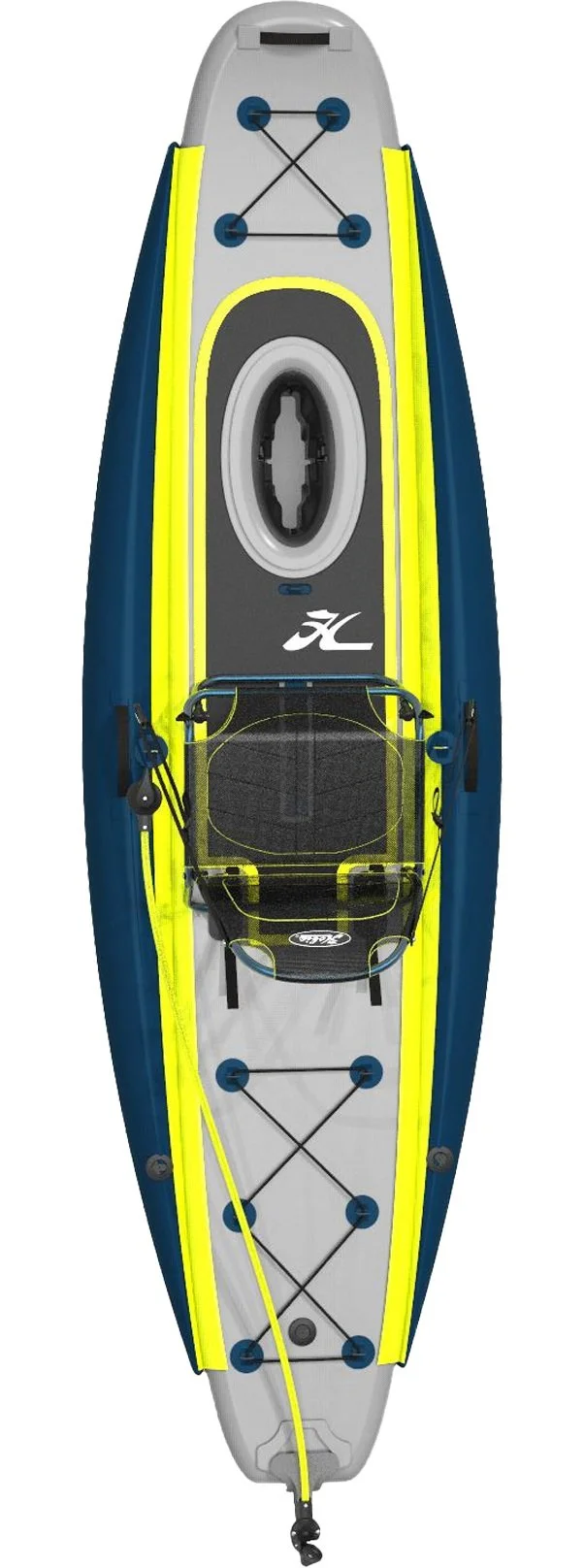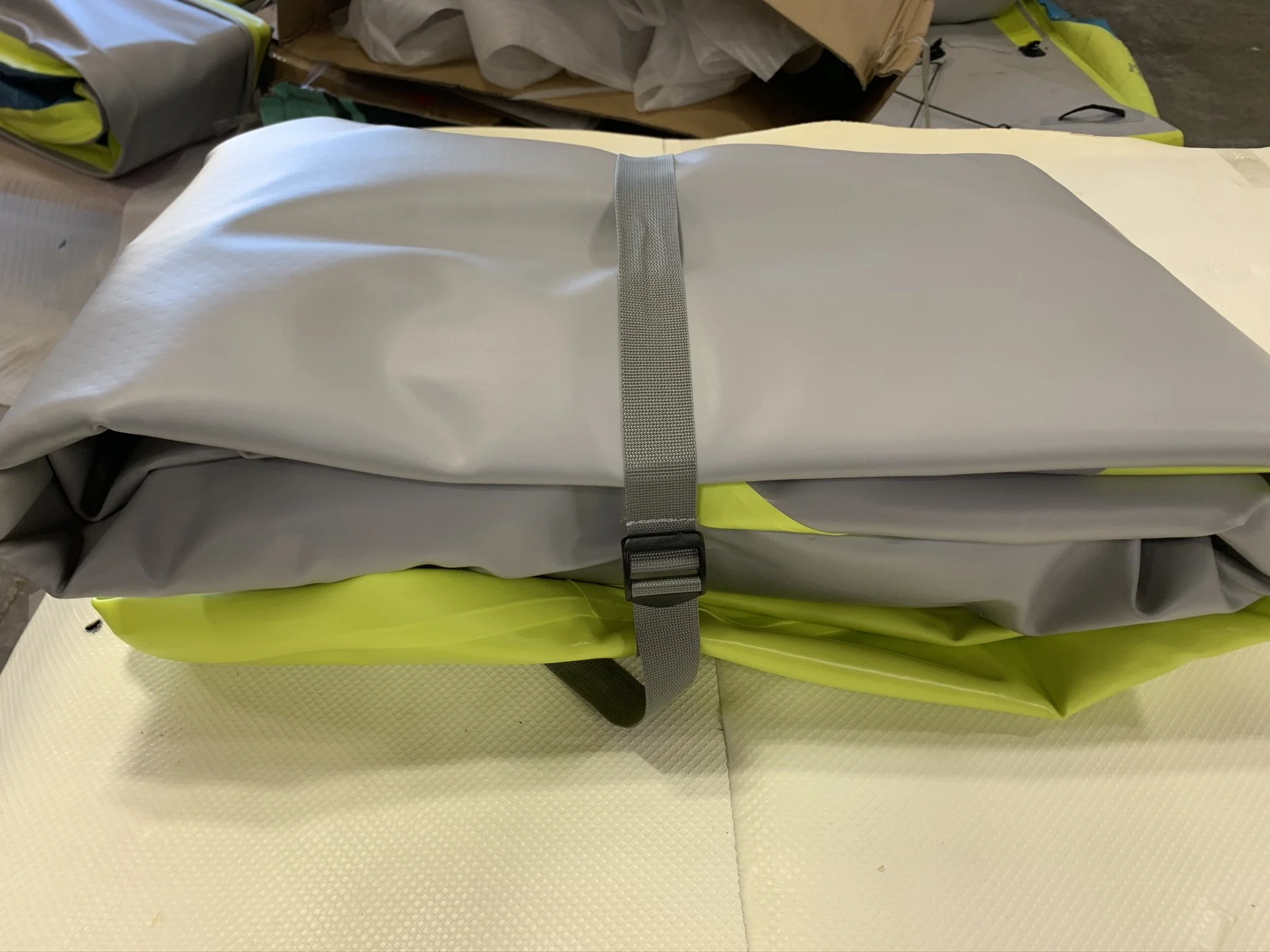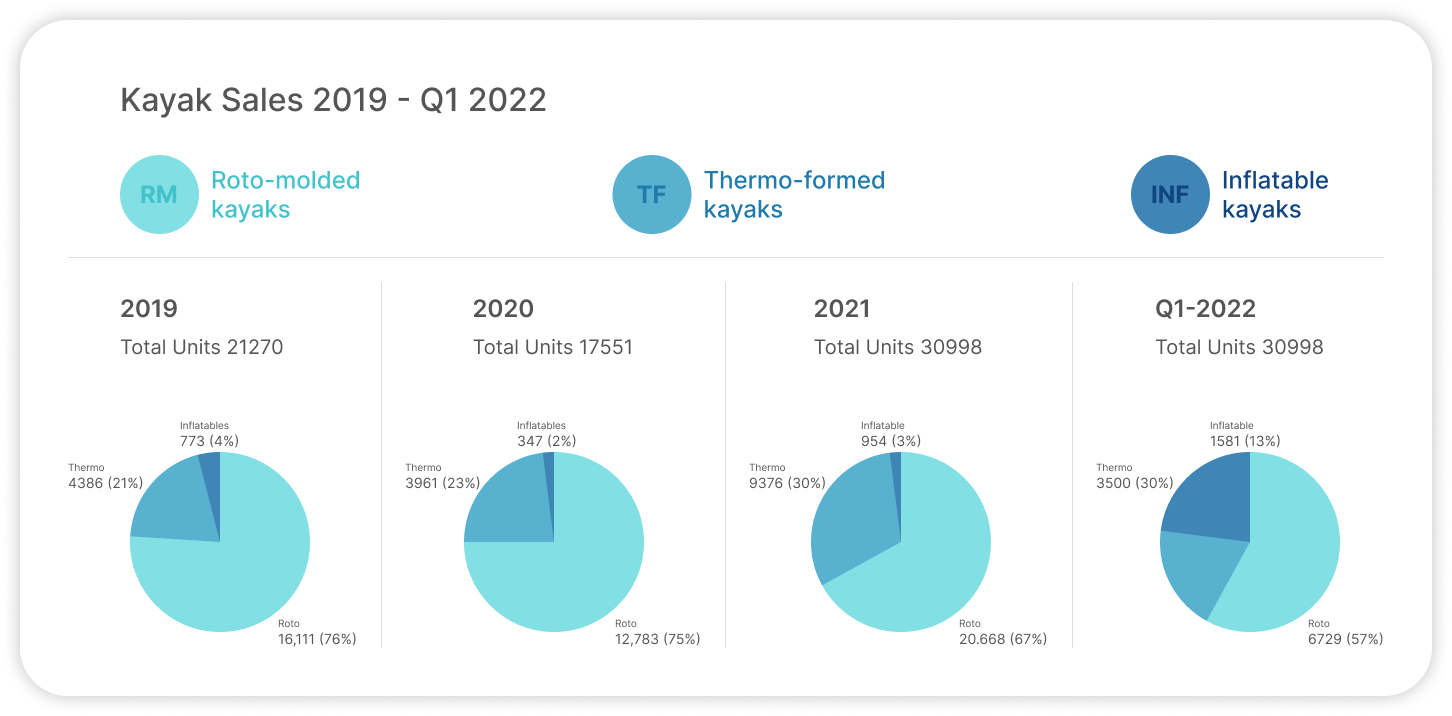
iTrek Kayak Series | Hobie
UX Design | User Research | Human Factors | Industrial Design
Contributing designers. Drew Brackett (Project lead & lead designer), William Broadway, Jason Kardas, Jim Czarnowski, Shane Yellin, Philip Dow, Elizabeth Sexton
Professional shots and studios, by Jeffery Fortuna.
Launched in 2021, this line of inflatable kayaks follows a minimal, low-profile platform. Powered by the patented Hobie MirageDrive, the iTrek series gives kayakers a new platform to revel in any body of water.
Every detail of the kayak, from the bag to the hull, was designed to bring joy to our customer’s experiences.

History and timeline.
i12 Kayak
2008 – 2020
i14 Kayak
2008 – 2020
i11 Kayak
2015 – 2020
Development
2018 – 2020
iTrek 11
2021 – Present
Research.
Five years of sales, a network of reps and dealers, and a loyal customer base gave us a clear framework for creating the most optimized line of inflatable, pedal-driven kayaks worldwide.
-
I reviewed claims from tech support and warrant, then compiled data for the most evident issues: the quality and construction of the kayak.
-
I contacted Hobie's sales rep and Hobie shop owners to understand use cases, user wants/needs, and pain points from the customer's end.
-
I teamed up with sales reps to observe and interview kayakers’ interactions with unpacking, setting up, using the kayak, breaking down, and packing up.
-
We are lucky to have “Hobie enthusiasts.” They love our product and openly share their experiences (good and bad) on Youtube, Facebook, Instagram and our internal forums. These stories, videos, photos, and comments help us understand user needs without bias.
Hull
-
Hulls were poorly constructed, specifically the connection of the side tubes. De-laminations were common due to over inflation. The interfacing parts for the seat and steering lacked structure which did not give a high perception of quality.
-
Four hull sizes were chosen defining a different use case for each model. Construction was reinforced for more durability and a higher quality product. The design for interfacing parts helped simplify the setup and break down along with instilling product longevity.
Steering
-
The steering system is permanently fixed on all past models. During folding, the steering lines would bend with the folds and kink. The kinked steering lines would cause friction internally and make steering the kayak difficult. Repairs were often needed to keep the steering functioning.
-
The intended direction for the steering was a design that could be bent and flexed over time. This idea progressed into a removable system.
The rudder clips on the back of the kayak, and the steering handle by the side of the seat, so the user can access it easily. The steering handle can move to either the left or right side depending on the driver’s preference.
The non-corrosive materials allow the system to flex and coil in storage. but never kink. The inner cables provide a buttery glide, free of friction.
On the water the system offers incredible maneuverability turning tight arcs or tracking straight.
Seat
-
The seat was comfortable but overcomplicated. During use, It would become loose from the mounting fixtures on the kayak hull, making the seat feel insecure. Installing and removing the seat was a lengthy process that involved attaching 4 gated hooks. This action became redundant and frustrating.
-
The design intent was to be simple, lightweight, and comfortable. I chose an aluminum frame due to its lightweight structure and perception of quality. The mesh was updated with materials that brought comfort and aesthetics while meeting the strength and stability from the element over time.
Bag
-
The storage bag was dated with both materials and aesthetics. There was no cohesion between the bag and kayak. The small wheels did not offer sufficient ground clearance, and the bag would catch debris when rolling. Rolling was awkward because the sewn handle on top of the bag did not provide an ergonomic grip for users.
-
The new bag line is tied into the same colors and materials used on the hull and seat. A heavy-duty, corrosion-resistant YKK zipper was used to make getting the kayak and components easily in and out of the bag.
Folding
-
The material used on past kayak models was thick. Many customers complained that they could not fold their kayaks to fit the size of the storage bag.
-
The iTrek series uses a single-layer Dropstitch which makes folding the kayak compact much easier than the past models.
See what our customers are saying.
-

Industrial Design
My role bringing this product from concept to production.







